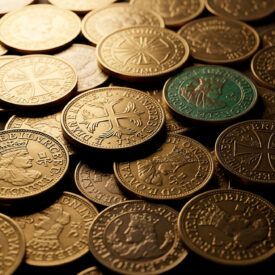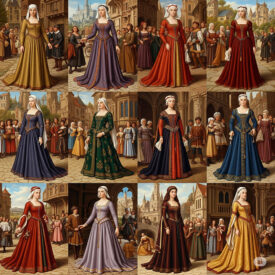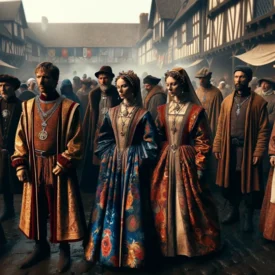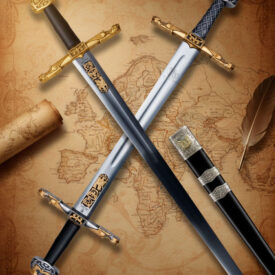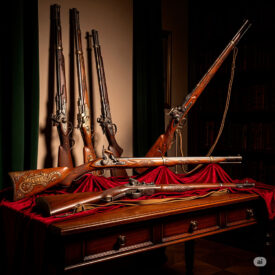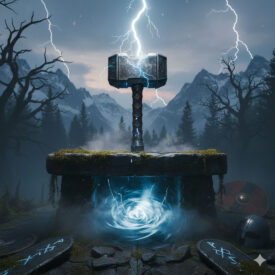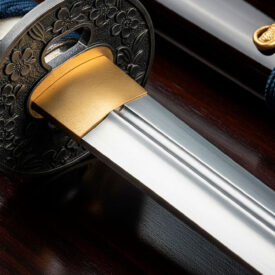The chalice has been, since the Last Supper, much more than a simple vessel: it is a symbol, a liturgical object, and a work of art. In this article, we explore medieval chalices, their formal, technical, and symbolic evolution, and why they continue to fascinate historians, goldsmiths, and believers.
A journey through time: origin and meaning
The word chalice comes from the Latin calix and in antiquity referred to a drinking cup. With the Last Supper, that cup acquired a sacramental dimension that endures: the chalice contains the consecrated wine, the Blood of Christ, and therefore its dignity and form have been the subject of artistic and theological reflection for centuries.
In the first Christian centuries, chalices were sometimes simple, made of wood, glass, or ceramics. Over time, noble metals and iconographic decoration were incorporated, consolidating the chalice as a work of goldsmithing and devotion.
The first Christian chalices and their transformation
The initial typologies were functional and sober: liturgical necessity prevailed over decoration. From the 6th century onwards, the custom of raising the cup on a foot appeared, and since then the form of the chalice began to be defined by parts: cup, knop, stem, collar, sub-cup, and foot. This process would culminate in the Middle Ages with complex and symbolic designs.
Romanesque: symmetry and balance
During the Romanesque period (11th-12th centuries), medieval chalices tended towards measured symmetry and balanced proportions. The inspiration from geometric canons and the sacredness of form led to spherical knops and sober decorations. A clear Hispanic example is the Chalice of Silos from the 11th century, with its completely round knop and filigree work reminiscent of horseshoe arches.
Main features
- Balanced proportions: cup-stem-foot relationship based on harmony.
- Decoration: filigree, arches, and geometric motifs.
- Materials: gold and silver in prestigious pieces, wood and glass in more modest examples.
Gothic: elevation and miniature architecture
The Gothic period (12th-14th centuries) redefined the chalice with a clear desire for elevation: the cup became slender, the stem taller, and the knop became the main feature. During this time, two recognizable variations of the Gothic knop appeared:
- Gothic temple: knops that reproduce flying buttresses, pinnacles, and arcades, as if they were small cathedrals.
- Flattened apple: an organic, almost oval shape that gave a natural and elegant appearance to the whole.
In addition, the sub-cup or rose and the collar were incorporated, and the polylobed feet (hexagonal or octagonal) increased the visual and symbolic base of the chalice.
Materials and techniques in the Gothic period
Goldsmiths adopted gilded silver and translucent enamels, especially with Sienese tradition. The polychromy of the enamels created effects similar to stained glass and miniatures, giving the chalice a strong visual impact from the altar.
Medieval chalices in the Iberian Peninsula: centers and examples
The Crown of Aragon, the influence of Avignon, and Hispanic cities such as Barcelona or Valencia were key production centers. Goldsmiths enjoyed similar recognition to architects and worked for the clergy, nobility, and ecclesiastical corporations.
Representative examples
- Holy Chalice of Valencia Cathedral: agate cup (1st century B.C./A.D.) assembled in the medieval period; it is venerated as the vessel of the Last Supper and has been used by recent popes.
- Chalice of Silos: Romanesque, symmetry and spherical knop.
- Chalice of Pope Luna (Peñíscola): early 15th century, knop with enameled lozenges and a star-shaped base.
- Chalice of the Compromise (Caspe): associated with Saint Vincent Ferrer and the Compromise of Caspe (1412); Avignon mark confirms its origin.
- Chalice of Santa María de Ujué: gilded silver commissioned by Charles III the Noble in 1394, with enamels and noble marks.
- Chalice of María de Luna (Museum of Art of Catalonia): gold and gilded silver, Valencia mark and manufactured by Berenguer Daries in 1403.
Materials, techniques, and production centers
In the 14th and 15th centuries, gilded silver was predominant, gold being reserved for exceptional pieces or for reliquary elements. Filigree, translucent enamels, and work in precious stones (agate, emerald) marked the quality of medieval chalices.
| Material | Technique | Advantages | Examples |
|---|---|---|---|
| Gold | Hammered, engraved, set | Prestige, longevity | Holy Chalice (mounting elements) |
| Gilded silver | Gilding, enameling | Golden appearance at lower cost | Gothic chalices from the 14th-15th centuries |
| Translucent enamel | Fire enameling on silver | Color and stained glass effect | Chalice of the Compromise |
| Stones (agate, emerald) | Mounting and setting | Material and symbolic value | Holy Chalice (agate cup) |
Comparison of styles: Romanesque, Gothic, Renaissance, and Baroque
| Period | Approximate date | Formal features | Typical decoration |
|---|---|---|---|
| Romanesque | 11th-12th c. | Symmetry, spherical knop, balanced proportions | Filigree, horseshoe arches |
| Gothic | 12th-15th c. | Elevated cup, architectural or apple knop, polylobed feet | Translucent enamels, pinnacles, arcades |
| Renaissance | 16th c. | Spherical or apple knops, tulip shapes | Classical ornaments, vegetal motifs |
| Baroque / Rococo | 17th-18th c. | Volume, acorn or pear knop, dynamic shapes | Cherubs, exuberant ornamentation |
Iconography and symbolism
Every element of the chalice has meaning. The cup represents the blood of Christ and the sacrifice; the foot offers stability and symbolizes the Church as a foundation; the knop is the heart of the piece, often decorated with images, enamels, or reliefs that tell biblical stories or heralds of donors.
The choice of materials is also symbolic: gold refers to divinity, silver to purity, and precious stones to light and eternity. The polychromy of the enamels adds spiritual dimension through color and brilliance.
Conservation and current study of medieval chalices
Chalices preserved in museums and cathedrals have come down to us thanks to liturgical care and respect for heritage. Restoration work combines metallurgy techniques, chemical analysis, and historical-artistic study to ensure the stability of enamels, stones, and metals.
Research identifies workshop marks, hallmarks, and techniques that allow a piece to be placed in a specific time and workshop (for example, the Valencia mark “CoronaVALEN” on 15th-century pieces). This reconstructs medieval commercial and artistic networks between Avignon, Barcelona, Valencia, and other centers.
How to recognize an authentic medieval chalice
When evaluating a chalice, several aspects must be considered:
- Mark or hallmark: seal of the goldsmith or workshop.
- Technique: enamel, gilding, or setting consistent with the period.
- Patina and wear: oxidation and use consistent with centuries of liturgical handling.
- Documentation: provenance, inventories, and inscriptions that confirm its history.
If you are looking for reproductions or collector’s pieces, remember that in our online store we offer faithful replicas and historically inspired pieces.
Reproductions, liturgical use, and contemporary decoration
The designs of medieval chalices continue to inspire contemporary artisans. Replicas allow ancient techniques to be appreciated and historical aesthetics to be used in celebrations or exhibitions. For current liturgical uses, it is essential that the piece complies with canonical norms regarding materials and the dignity of the object.
In our online store, you can find copies inspired by Romanesque, Gothic, and Renaissance models, as well as decorative pieces that rescue medieval motifs.
Cultural, religious, and artistic value
Medieval chalices are a tangible heritage of the conjunction between art and faith. They tell us about devotion, patrons, workshops, and commercial circuits that crossed Europe. They preserve inscriptions, marks, and symbols that allow us to read the religious and material history of the Middle Ages.
Each piece is a witness to celebrations, community life, and the technical excellence of goldsmiths who achieved great prestige for their ability to transform metal into a symbol.
How to approach a medieval chalice today
Visiting cathedrals and museums, reading technical sheets, and requesting information on provenance and restorations are the best ways to understand a piece. If your interest is to acquire a quality reproduction, consult the technical descriptions and the finish in the online store: there you will find specifications about the materials and techniques used.
The observation of details (enamels, marks, knop, and foot) allows us to appreciate the goldsmith’s hand and the historical context in which each chalice was made.
The legacy of medieval chalices
Medieval chalices unite faith and art: each piece summarizes centuries of devotion, artisanal techniques, and theological symbolism. They retain their evocative power and continue to inspire liturgists, collectors, and artisans alike. Observing a medieval chalice is reading a page of material and spiritual history that continues to offer lessons on beauty, craftsmanship, and transcendence.





